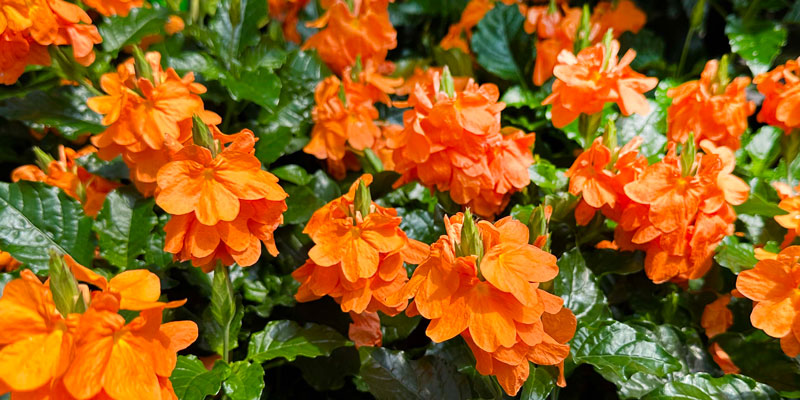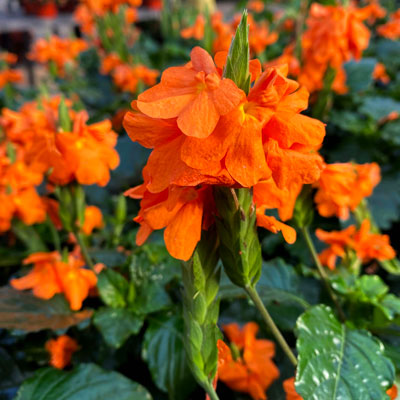One of our best unknown plants

Places where smart people garden like North Carolina State University and the Missouri Botanical Garden call this plant “firecracker flower,” or at least that’s the common name they try to pin on it. Growers I know (and I) call this plant simply “crossandra.”
They had this thing growing in the floriculture greenhouses at Texas A&M. That’s a gutsy thing for a bunch of Aggies to do – grow orange flowers half a mile from Kyle Field, but most of us really liked it. It’s an easy-going little potted plant that blooms for weeks or months at a time and never asks for much other than a warm, bright spot and moisture.

Then I transferred to Ohio State and I never saw the plant again. 30 years passed and I would only occasionally see it in horticultural displays, usually only one plant here and another plant there.
Then, 15 or 20 years ago nurseries like Calloway’s started offering it each autumn along with their other fall colors. After all, that was when they were featuring orange-red crotons by the truckload along with orange kalanchoes and Indian corn. Crossandras fit in just perfectly.
Here’s what you’ll want to know…
• Common name: Crossandra, firecracker flower
• Scientific name: Crossandra infundibuliformis
• Native to: Tropical Africa, Bangladesh, India, Sri Lanka
• Size: Grows to 15-20 ins. tall.
• Foliage: Evergreen, extremely glossy
• Hardiness Zones: 10-11 (Rio Grande Valley, frost-free areas along immediate Texas Gulf Coast with protection)

• How best grown: In pots, but sometimes grown in ground beds; most frequently grown in pots in bright settings indoors
• Soil preferences: Light, highly organic, well-draining, but with good water-holding capacity
• Lighting: Bright shade, no direct sunlight in summer
• Humidity needs: High humidity, so avoid hot, drying settings.
• Flowering season: Year ‘round; keep plants growing vigorously to keep them blooming.
• Propagated: Cuttings preferable, or seed.
